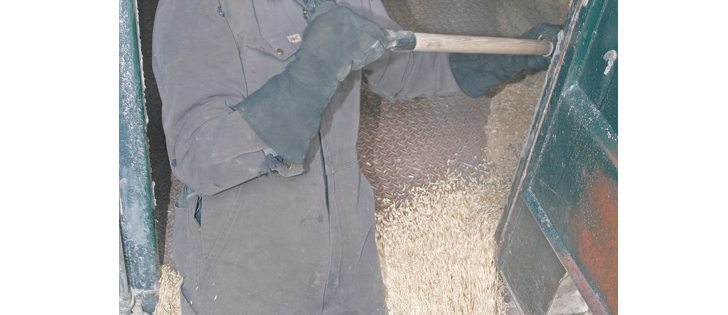MOOSE JAW, Sask. — Farmers with oats to sell should hold off for now, advises analyst Brenda Tjaden Lepp of FarmLink Solutions.
It’s not a good time of year to sell any cereals, she said in an interview at the Prairie Oat Growers Association annual conference.
“As a general rule of thumb, with the exception of some of the pulse markets, which are really hot right now (and) need to be watched closely, cereals markets probably need to be left alone,” she said.
“Oats for sure. I would say the same thing about wheat.”
Read Also

Pakistan reopens its doors to Canadian canola
Pakistan reopens its doors to Canadian canola after a three-year hiatus.
Tjaden Lepp said western Canadian supplies are tight but it’s too early to know with much confidence what the actual supply and demand will be or whether prices will be 50 cents higher or lower in the spring.
“But when you look at the balance of supply and demand influences right now, there’s definitely more upside than there is downside risk,” she added.
That’s because prices are close to the cost of production of oats.
“The bids have kind of been grinding around at the lows of the year,” she said.“Oftentimes that’s a sign that the market’s reestablishing some value and some commercials are taking coverage.”
The market will go up in the short and medium term if supply estimates are correct and if nothing changes on the demand side.
World grain stocks are large, and Tjaden Lepp said wheat and soybean supplies will act as a headwind for cash market upside for local prairie cash grain crops in the next few months.
Further out, there is always potential for things to change.
“The best advice I could give to a farmer trying to decide whether or not to sell oats or some other crops today is just wait and see,” she said.
“Give the market some time to do its thing.”
Farmers should be looking at their inventories and establishing how much there is and its quality.
Producers at the conference heard about the importance of quality and purity for selling into markets with specific attributes, such as gluten-free oats. Tjaden Lepp said that is true for all cereals.
She said farmers can test samples to find out exactly what they have and be in a better position to shop their oats around.
Markets are likely to pick up in January and February, but Tjaden Lepp said she was surprised at how “frothy” they were last week. Between Nov. 30 and Dec. 4 soy oil rose 10.5 percent, soybeans climbed 3.8 percent, canola was up 2.4 percent, corn climbed 3.9 percent and Minneapolis wheat rose 1.8 percent.
“Maybe that’s a function of thin holiday trade because most of that is happening on the futures and not on the cash side yet,” she said.
“We are seeing the basis levels for wheat, canola, oats kind of correct some of the futures’ volatility right now. That just tells us we’re still in a well-balanced situation of where prices are.”
She also said she urges a wait-and-see approach, assuming that most farmers have sold off the combine to manage storage and fall cash flow.
Farmers typically don’t like to store bulky oats, but that’s what she recommended this year.
The supply-and-demand balance for last year, next year and the year after have looked tight, but the market has not responded, Tjaden Lepp said.
Oat prices of less than $2.50 a bushel are weak, which she attributes to farmer selling pressure in the fall. Yields came in better than expected and that lengthens the selling window.
She also advised farmers to spend some time getting a precise cost of production.
“I don’t think there’s going to be a wild trading range on new crop oat prices for a while. If an opportunity comes along where the price is 30 or 40 cents a bushel above your cost of production, that might be just enough,” she said.
“You might just want to lock that in, especially if the cash flow in the fall is going to be an issue and you can get that kind of a price for the fall window and then you’d be in a position as a farmer to back-end load the rest of it.”
Tjaden Lepp said she expects oat supplies will not be burdensome next year. Specialized use and a tight, disciplined circle of traders means a more controlled market.
















